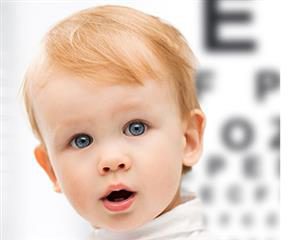 Amblyopia is the medical term used when the vision in one of the eyes is reduced because the eye and the brain are not working together properly. The eye itself looks normal, but it is not being used normally because the brain is favoring the other eye. This condition is also sometimes called “lazy eye.” The National Eye Institute (NEI) explains on its website that the brain and eyes work together to produce vision. As an image meets the retina (the area in the back of the eye) it sends that information along nerve pathways leading to the brain, which then interprets the image. When one eye isn’t functioning properly, it causes the brain to begin to ignore the information coming from the weaker eye. Over time, that can result in vision loss.
Amblyopia is the medical term used when the vision in one of the eyes is reduced because the eye and the brain are not working together properly. The eye itself looks normal, but it is not being used normally because the brain is favoring the other eye. This condition is also sometimes called “lazy eye.” The National Eye Institute (NEI) explains on its website that the brain and eyes work together to produce vision. As an image meets the retina (the area in the back of the eye) it sends that information along nerve pathways leading to the brain, which then interprets the image. When one eye isn’t functioning properly, it causes the brain to begin to ignore the information coming from the weaker eye. Over time, that can result in vision loss.
Amblyopia can develop from these conditions (source: American Academy of Ophthalmology):
- Strabismus, aka “cross-eyed” or “wall-eyed” — a vision condition where a person can’t align both eyes simultaneously under normal conditions. One or both of the eyes may turn in, out, up, or down.
- Refractive — a difference in vision between the eyes due to one being far- or near-sighted. It can also be caused by the surface curve of the eye (astigmatism).
- Deprivation — the most severe type of amblyopia, caused by a cataract in one eye. This must be corrected by surgery as soon as possible to avoid vision loss.
- Ptosis, aka “droopy eyelid” — the droopy eyelid can block vision in one eye, causing amblyopia to develop. This may have to be corrected by surgery as well.
Symptoms
Amblyopia isn’t always easy to detect. Generally speaking, it’s considered to be a childhood visual impairment, which develops from birth on up to age 7. In fact, the NEI says it’s the most common cause of visual impairment amongst children, affecting two to three kids out of 100. Premature babies, babies who are small at birth, family history of amblyopia, and children with developmental delays are more prone to the condition.
So what should a parent watch for?
When looking at your child’s eyes, the Mayo Clinic notes the most obvious signs to watch out for is if you can see one eye wander either inwards or outwards. You may also notice that the child’s eyes appear to be crossed. Another thing to look out for is if you see a cloudy spot (cataract) where the pupil is (the black part of the eye). If your child has a droopy eyelid, that can also impair their vision and cause amblyopia to develop in that eye.
The not-so-obvious signs to watch for include observing your child squinting or shutting one eye to force themselves to focus. Another indicator is when you see them tilting their head to see things.
The above behaviors may indicate refraction issues (nearsightedness or farsightedness), so your child should have a comprehensive eye exam regardless. Also, to reiterate, if there is a family history of amblyopia, the sooner you can have your child checked by either an optometrist or ophthalmologist, the better. Why? Because early intervention matters. If left untreated, permanent vision loss could occur.
Treatments
Overall, childhood amblyopia can be corrected by patching the stronger eye, to force the weaker eye to develop the muscles necessary to strengthen it. Alternatively, eye drops can be placed in the stronger eye to blur the vision slightly. This forces the weaker eye to work more. Sometimes, if the child already wears glasses, a blurry lens can be put in on the stronger eye’s side, but this isn’t as effective as patching or eye drops.
It can take a few weeks on up to several months to strengthen the weaker eye, so it is very important to make and keep eye doctor appointments to monitor the progress.
If you suspect your infant or child might have a lazy eye, schedule an appointment with Dr. Cheryl or Dr. Dave for a pediatric assessment.

